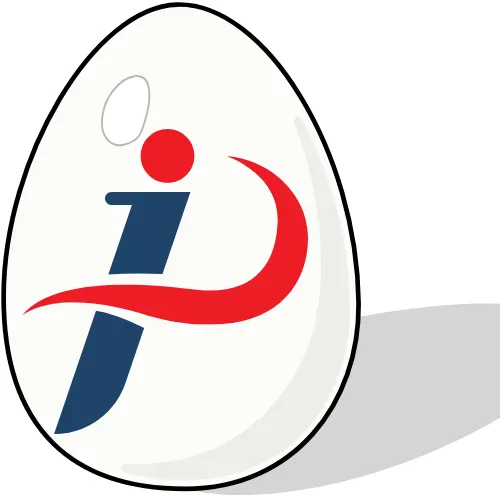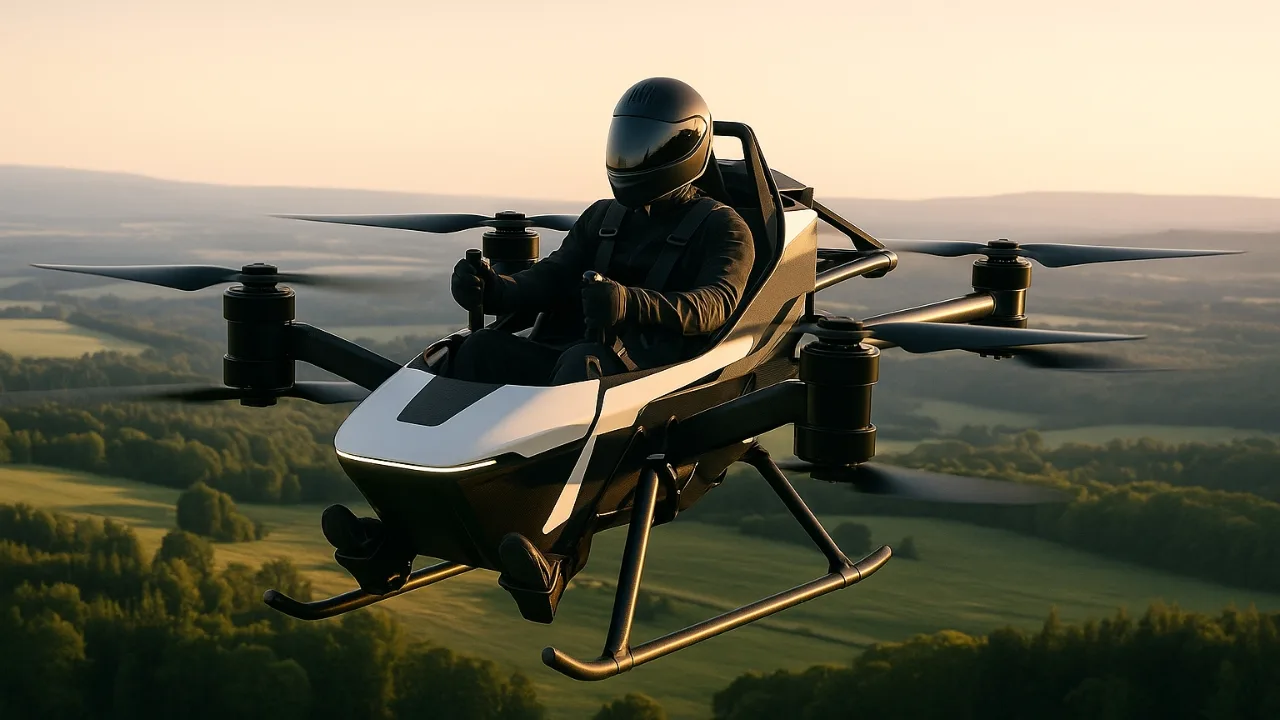For decades, the idea of personal flying vehicles has felt like something straight out of science fiction. But with the unveiling of the 2026 Jetson One Personal Flying Drone, the dream of soaring above traffic is now within reach. Jetson, a Swedish aviation company founded by Tomasz Patan and Peter Ternström, has built one of the world’s first consumer-ready eVTOL (electric vertical takeoff and landing) aircraft. Compact, efficient, and incredibly intuitive, the Jetson One brings the freedom of flight to the everyday user.
“Our mission is to make everyone a pilot,” says Jetson co-founder Peter Ternström. “We’re transforming personal mobility from the ground up — or rather, from the ground to the sky.”
The 2026 Jetson One expands on the success of its earlier prototype with improved safety, battery efficiency, and onboard AI. Designed for simplicity, sustainability, and thrill, this personal flying vehicle redefines what daily commuting could mean in the near future.
Design & Build: Futuristic Yet Functional
At first glance, the Jetson One 2026 looks like something out of a sci-fi movie — but every detail serves a purpose. Its open-frame structure emphasizes lightness and agility while maintaining impressive durability. The aircraft’s design draws inspiration from racing drones and performance cars, blending cutting-edge materials with aerodynamic finesse.
| Specification | Details |
|---|---|
| Body Material | Aerospace-grade aluminum and carbon fiber |
| Weight (Empty) | 190 lbs (86 kg) |
| Maximum Payload | 210 lbs (95 kg) |
| Dimensions | 118 x 82 x 35 inches |
| Propulsion | 8 electric motors (independent thrust system) |
| Seats | 1 (single pilot configuration) |
The design features foldable propeller arms, LIDAR sensors, and a carbon fiber safety cage that protects the pilot in the event of a crash. The color scheme is customizable, with sleek metallic hues and LED accents highlighting its futuristic aesthetic.
“Every line, curve, and component was designed with human flight in mind — lightweight, balanced, and intuitive,” explains chief engineer Lars Nilsson.
Performance & Powertrain: Electric Flight Redefined
The 2026 Jetson One’s performance pushes the boundaries of personal flight. Powered by eight independent electric motors, it offers redundancy and balance, ensuring that even if one motor fails, the aircraft can maintain stable flight.
| Performance Metric | Specification |
|---|---|
| Top Speed | 102 km/h (63 mph) |
| Flight Duration | Up to 30 minutes |
| Flight Range | 32 km (20 miles) |
| Max Altitude | 1,500 feet (460 meters) |
| Charging Time | 1 hour (fast charge) |
| Battery Type | High-density lithium-ion modular pack |
The hybrid control system uses both manual joystick inputs and AI stabilization. This allows beginners to fly with minimal training, while experienced pilots can switch to more manual modes for dynamic maneuvering.
Cadillac’s engineers have worked to optimize the thrust-to-weight ratio, making the Jetson One exceptionally agile. It can accelerate rapidly, maintain perfect hover stability, and descend with precision.
“You don’t need to be a pilot to fly it. If you can use a gaming joystick, you can handle a Jetson One,” says Jetson’s lead test pilot Henrik Olsson.
AI-Assisted Safety: Built for Confidence in the Sky
Safety has been a top priority for Jetson since its inception. The 2026 version integrates new AI-assisted flight software that constantly monitors altitude, battery levels, and weather conditions.
Key Safety Features
- Eight-Motor Redundancy: Ensures continued stability if one motor fails.
- Ballistic Parachute System: Deploys automatically in emergencies.
- Obstacle Avoidance Sensors: Detects objects in real-time using LIDAR and sonar.
- Autonomous Hovering: Allows stable hovering without manual input.
- Auto-Land Mode: Engages when the system detects low battery or unsafe flight parameters.
The onboard computer also features auto-return-to-home (RTH) functionality, guiding the vehicle safely back to its takeoff location. AI continuously assists with positioning, stability, and even landing during adverse conditions.
“The 2026 Jetson One is the safest personal eVTOL on the market. It practically flies itself when necessary,” notes aerospace analyst Clara Jensen.
Interior & Pilot Experience: Immersive and Accessible
Despite its compact frame, the cockpit feels futuristic and welcoming. The pilot’s seat is crafted from aerospace-grade composite foam, providing comfort even during long flights. A four-point harness ensures safety, while the transparent canopy enhances visibility.
Pilot Interface
- Dual Joystick Controls for intuitive steering and throttle management.
- Head-Up Display (HUD) showing speed, altitude, and battery data.
- Touchscreen Console for GPS navigation and system monitoring.
- Voice Command Integration allowing control over lighting, speed mode, and communication.
A gesture control system adds another layer of interactivity — pilots can adjust altitude or toggle features with simple hand movements. The cockpit also features LED ambient lighting that changes color depending on mode: blue for cruise, red for boost, and green for landing.
Charging & Efficiency: Built for Practical Everyday Use
The Jetson One runs purely on electricity, supporting both standard and fast charging. Owners can charge the vehicle at home using a 220V outlet or use the Jetson Charging Hub, available in select locations.
| Mode | Range | Charge Time |
|---|---|---|
| Standard | 20 miles | 60 minutes |
| Eco Mode | 25 miles | 75 minutes |
| Sport Mode | 15 miles | 45 minutes |
With regenerative braking during descent and energy-efficient flight software, the aircraft minimizes waste. Optional solar charging panels can extend its range when parked outdoors.
Licensing, Regulations & Training
One of the Jetson One’s greatest strengths is that it falls under the Ultralight Aircraft Category (Part 103 in the U.S.), meaning it does not require a pilot’s license for operation. However, users must adhere to local aviation laws, such as no-fly zones and altitude restrictions.
Jetson provides an optional Flight Academy program, offering short training sessions to help new pilots understand the controls, safety systems, and maintenance procedures.
“We want flight to be accessible — safe, intuitive, and regulated responsibly,” says Jetson CEO Riccardo Dalla Vedova.
Price, Customization & Delivery
The 2026 Jetson One is priced at $128,000, with the Premium Edition starting at $155,000. Jetson offers full customization options, including custom paint colors, carbon fiber accents, and performance upgrades.
| Model | Price (USD) | Delivery Window |
|---|---|---|
| Jetson One Standard | $128,000 | Q4 2026 |
| Jetson One Premium (Extended Battery) | $155,000 | Early 2027 |
Production is limited to maintain exclusivity and safety quality. The first batch of 500 units has already sold out through pre-orders, with thousands more customers on the waiting list.
Comparison: Jetson One vs Competitors
| Feature | Jetson One 2026 | Typical eVTOL Drone |
|---|---|---|
| Top Speed | 102 km/h | 80–90 km/h |
| Flight Time | 30 minutes | 20–25 minutes |
| Charging Time | 1 hour | 2–3 hours |
| AI Assistance | Full integration | Limited or none |
| Pilot License | Not required | Required in most cases |
| Price Range | $128K–$155K | $100K–$200K |
Jetson’s combination of simplicity, safety, and regulatory freedom gives it a unique advantage in the growing personal eVTOL market.
Environmental Impact: Clean Flight for a Sustainable Future
The 2026 Jetson One is 100% electric, producing zero emissions during operation. Its energy-efficient design and modular battery system make it one of the most sustainable aircraft in its class. Jetson also recycles battery cells and uses eco-certified carbon materials for the airframe.
“Our mission is sustainability through innovation — personal aviation should be both thrilling and responsible,” says environmental consultant Greta Linström.
The Future of Urban Air Mobility
As cities become more congested, eVTOLs like the Jetson One could redefine urban travel. Jetson envisions networks of micro-airports and charging pads that allow quick point-to-point travel between cities and suburbs. By 2030, the company aims to expand into two-seater and autonomous models, pushing the boundaries of personal aviation even further.
“We’re not replacing cars — we’re creating an alternative dimension of mobility,” says futurist Adrian Lewis.
Conclusion: The Sky Is No Longer the Limit
The 2026 Jetson One Personal Flying Drone represents more than a technological milestone — it’s a symbol of freedom. Compact, safe, and electrifyingly fun, it paves the way for a future where the average person can take to the skies with ease. With production ramping up and innovation accelerating, personal flying vehicles are no longer a distant dream — they’re a tangible reality.
If you’ve ever dreamed of flying over traffic or exploring the skies solo, the Jetson One might just be your ticket to the future.
FAQs
How fast can the Jetson One fly?
It reaches speeds up to 102 km/h (63 mph) with full stability.
What is the flight range?
It can travel 20–32 km (12–20 miles) on a single charge.
Is it safe for beginners?
Yes. It includes AI-assisted stabilization, auto-landing, and parachute systems.
How long does it take to charge?
A full recharge takes about 60 minutes using fast charging.
When will deliveries begin?
Deliveries start in late 2026, with the Premium version shipping in early 2027.

